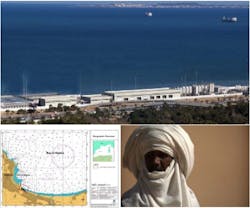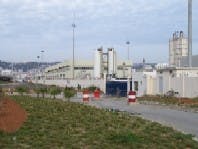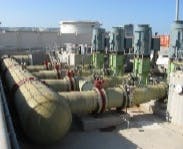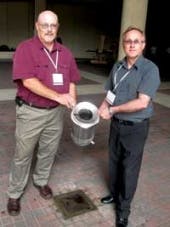Overview of Hamma Seawater Desalination Project (top) and its location (lower left) [Map Source: Metoc plc]Algeria’s new Hamma Seawater Desalination plant will help this North African country meet its potable water demands for many years. The seawater reverse-osmosis (SWRO) desalination plant is in the capital city of Algiers along the Mediterranean Sea near the Port of Algiers. With a population that’s grown to 3.5 million and in a country with only 3% arable land, water is a necessity for this semiarid seaside city.
Officially opened in February 2008, the 200,000 m³/day (53 mgd) plant is one of the largest public private partnerships (PPP) in Africa, and the largest desalination plant on the African continent. Once in full production, it’s expected to supply almost a quarter of Algiers’ potable water needs. This will offer relief for the country’s residents, plagued with potable water shortages for years and currently without a 24-hour water supply.
The $275 million build-own-operate project was a multi-party effort with the Overseas Private Investment Corp. (OPIC), General Electric and the Algerian Energy Co. (AEC) -- with GE and AEC forming the PPP. Construction was a joint effort between GE/Hamma Water Desalination (HWD) and Orascom Construction Industries (OCI). GE will take final ownership at construction's end and operate the plant under a 25-year agreement with HWD to provide water for purchase for a portion of Algeria’s potable water needs. The plant’s process design was developed by GE and utilizes the firm’s RO process equipment with an energy recovery system from San Leandro, California-based Energy Recovery Inc., and related support systems.
Stanley Consultants, a global consulting engineering firm, provided construction level detail for OCI. Fitting all the required process structures and equipment into the limited space of the plant site was challenging even though the RO process takes up 25% less land area on average than competing desalination platforms such as multi-stage flash (MSF) distillation. The firm was able to assist with optimization of the available space so all of the process units could be successfully placed.






